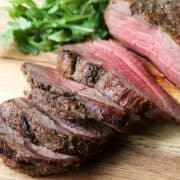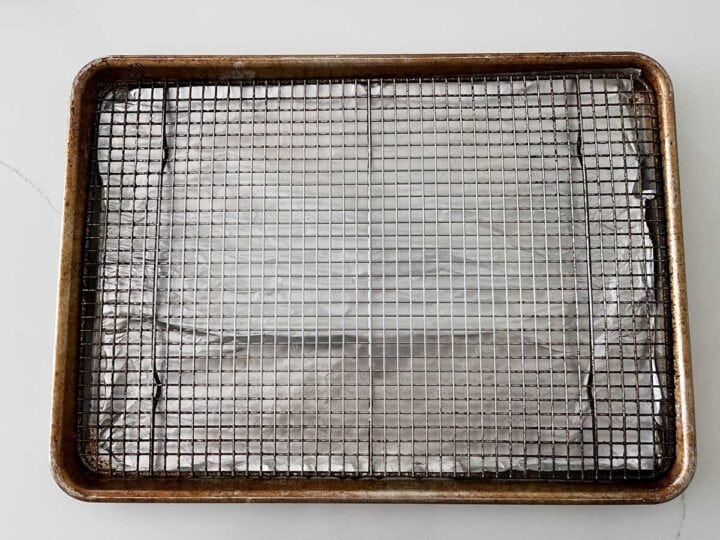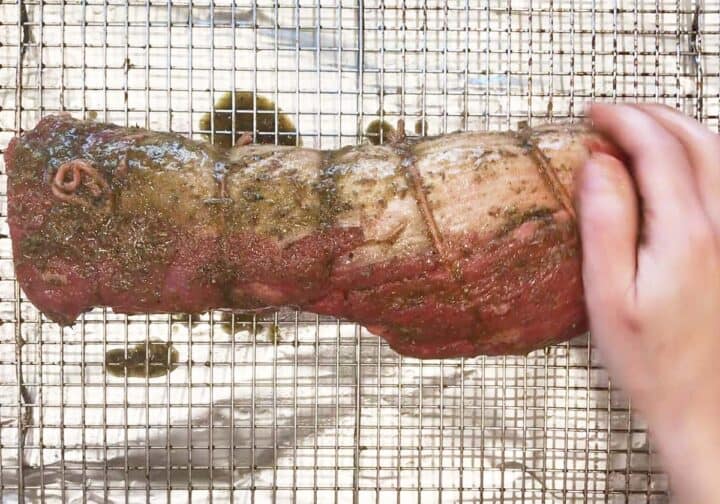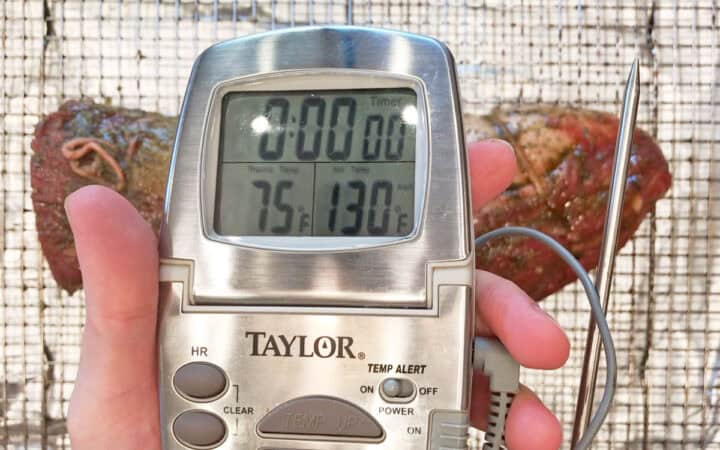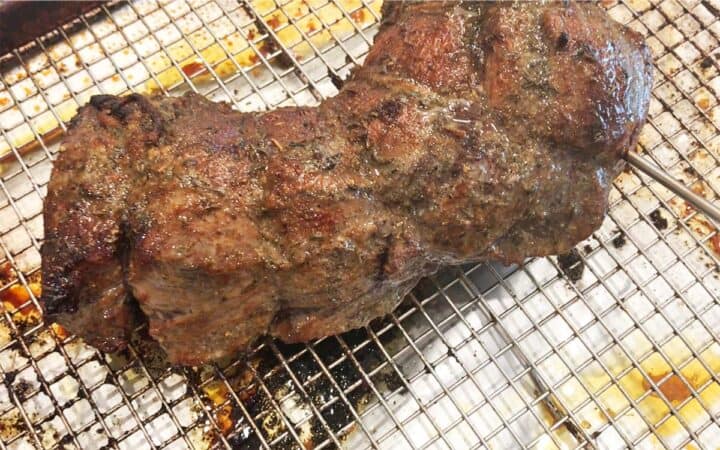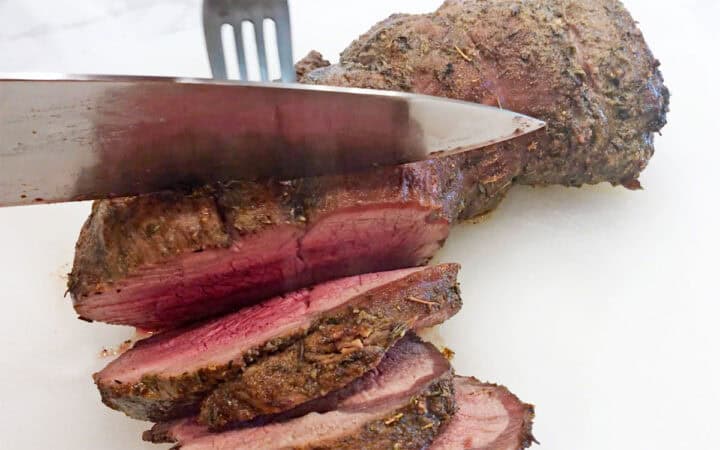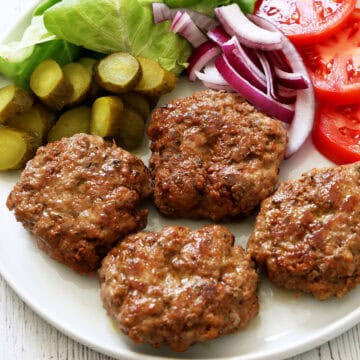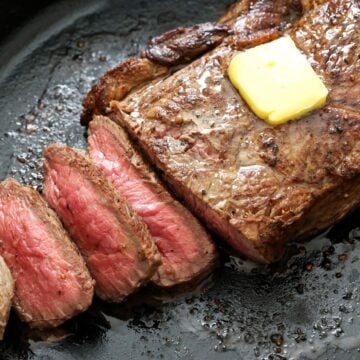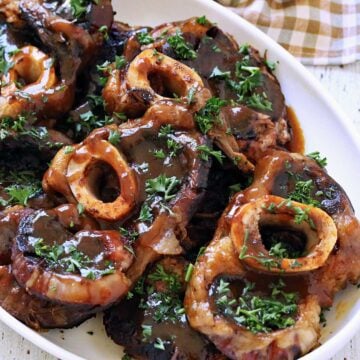This beef tenderloin roast is tender, juicy, and flavorful. It's also surprisingly easy to make. Rub the meat with olive oil and spices, roast it in a 500°F oven to brown the outside, then finish cooking in a 350°F oven.
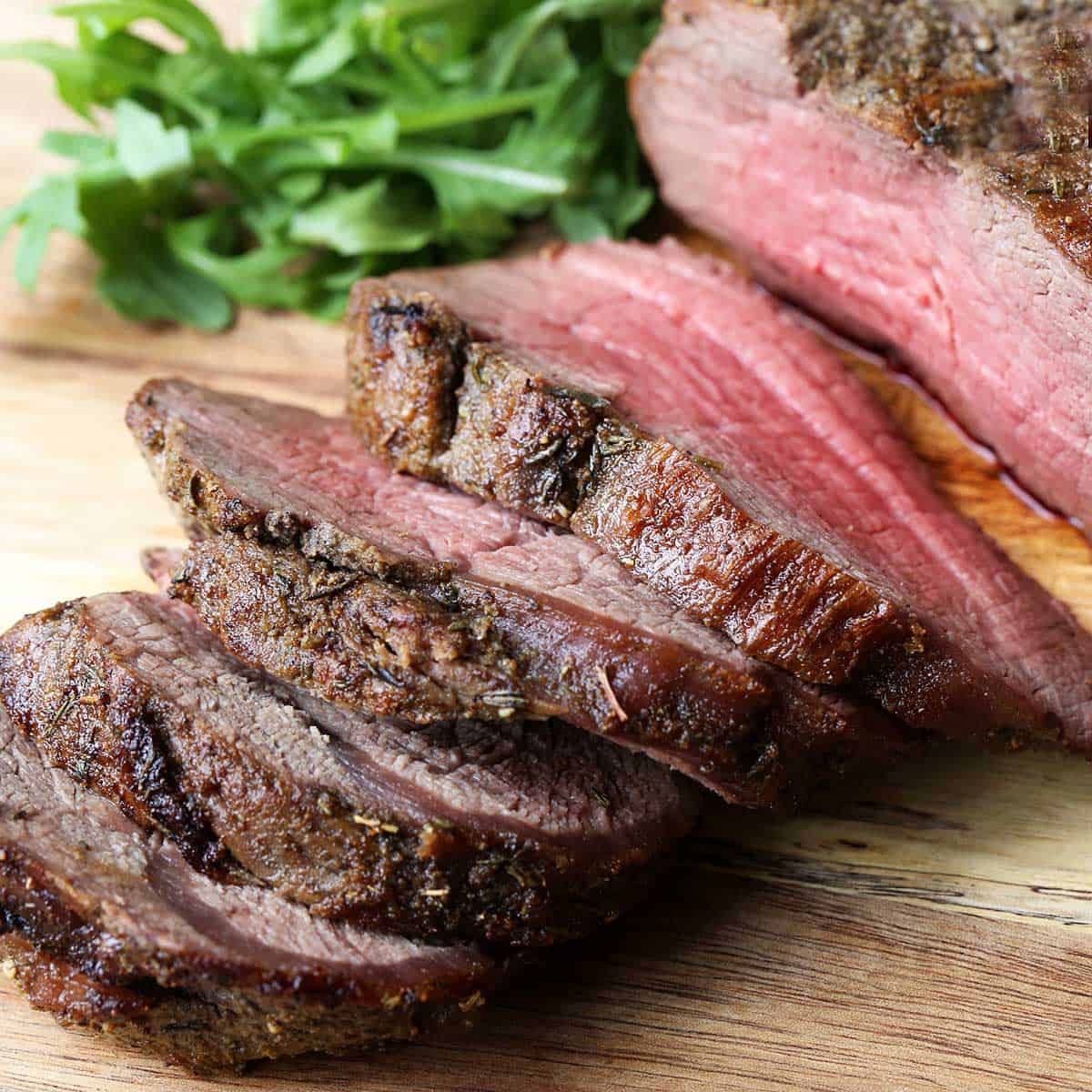
This delicious roast is perfect for special occasions. My simple method of browning the beef in a hot oven and then finishing it in a moderate oven produces a tender, juicy, and flavorful roast. Much like ribeye roast, I don't make this recipe often because it's pricey, but it's a huge success when I do!
Ingredients
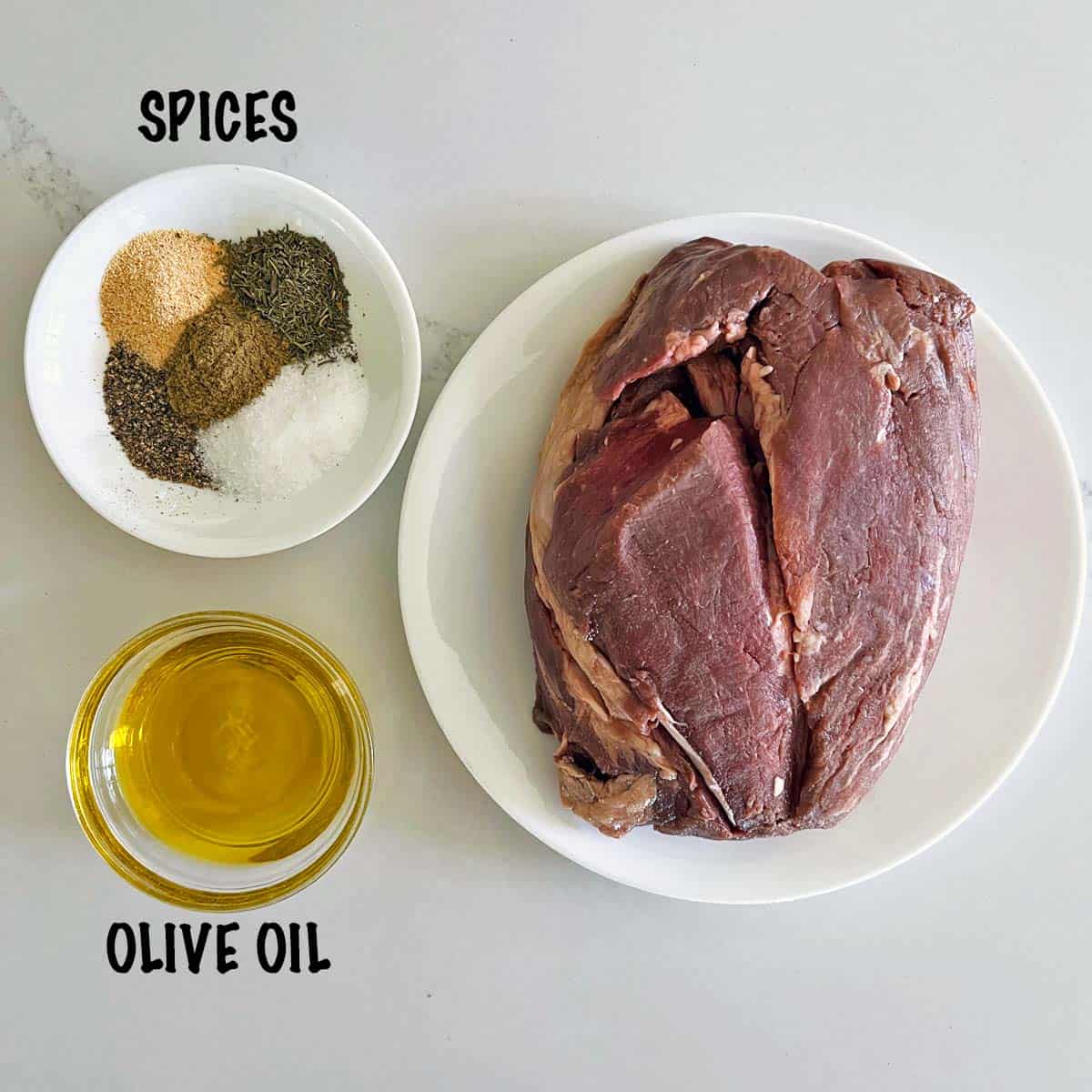
See the recipe card for exact measurements. Here are my comments on the ingredients.
- Beef tenderloin roast: I usually get a small 2-pound roast. If your roast is bigger, you'll need to increase the cooking time.
- Olive oil: You can use avocado oil or melted butter instead of olive oil.
- To season: Kosher salt, black pepper, garlic powder, dried thyme, and dried sage.
Instructions
This is a surprisingly easy recipe, considering it's such a fancy cut. The detailed instructions and step-by-step photos are included in the recipe card. Here's a quick overview.
Bring the roast to room temperature. This will help it cook more evenly. In a small bowl, prepare a mixture of olive oil and spices. Pat the beef dry, then rub it with the mixture.
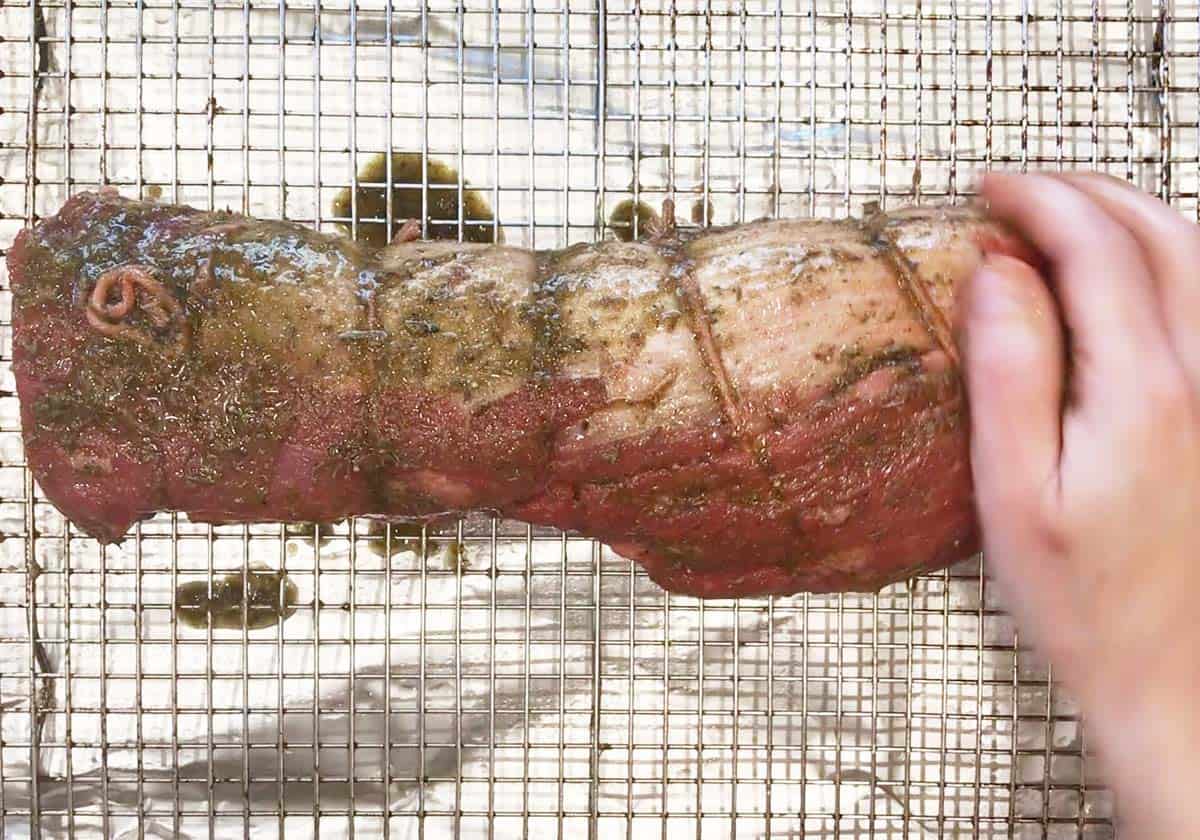
Insert an oven-safe meat thermometer set to 130°F (medium-rare) into the roast's thickest part. Cook it for 15 minutes in a super-hot (500°F) oven.
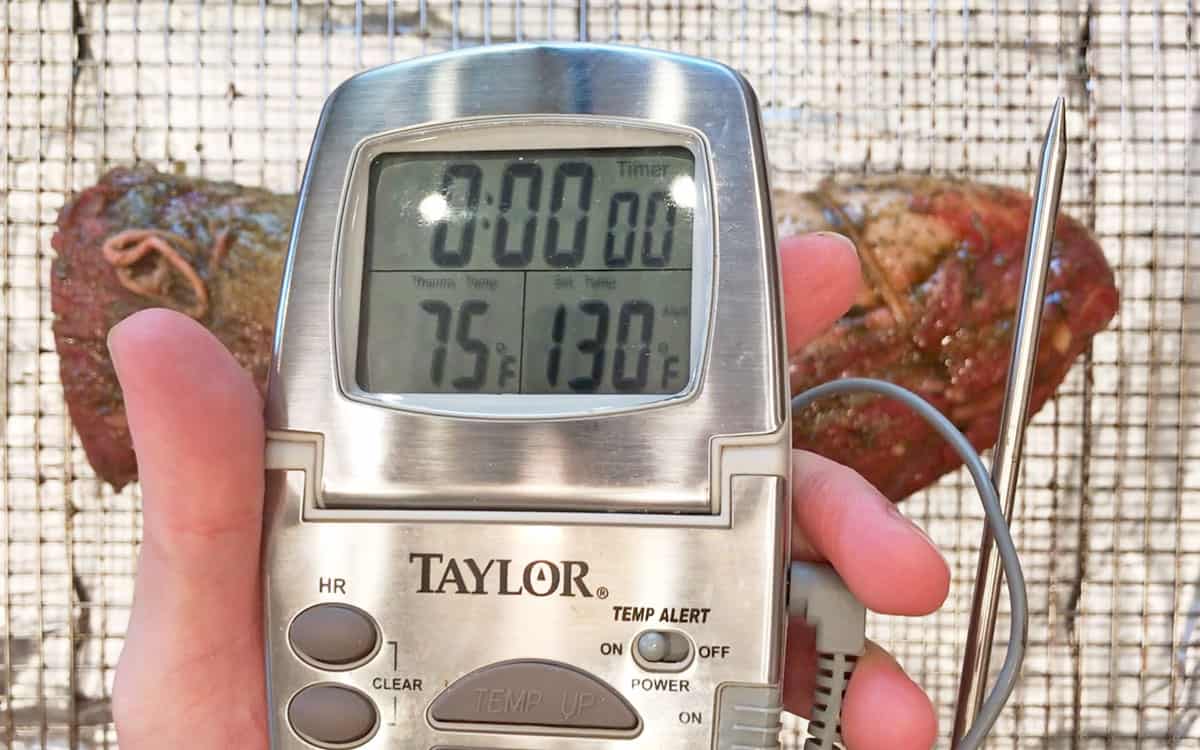
Lower the oven temperature to 350°F and keep cooking until the roast reaches an internal temperature of 130°F. With a 2-pound roast, this should take 20-30 minutes, but the only way to know for sure is to use a meat thermometer. Let the roast rest before slicing it to prevent the juices from escaping when you cut into it. Gently remove the butcher twine, slice the roast, and serve.
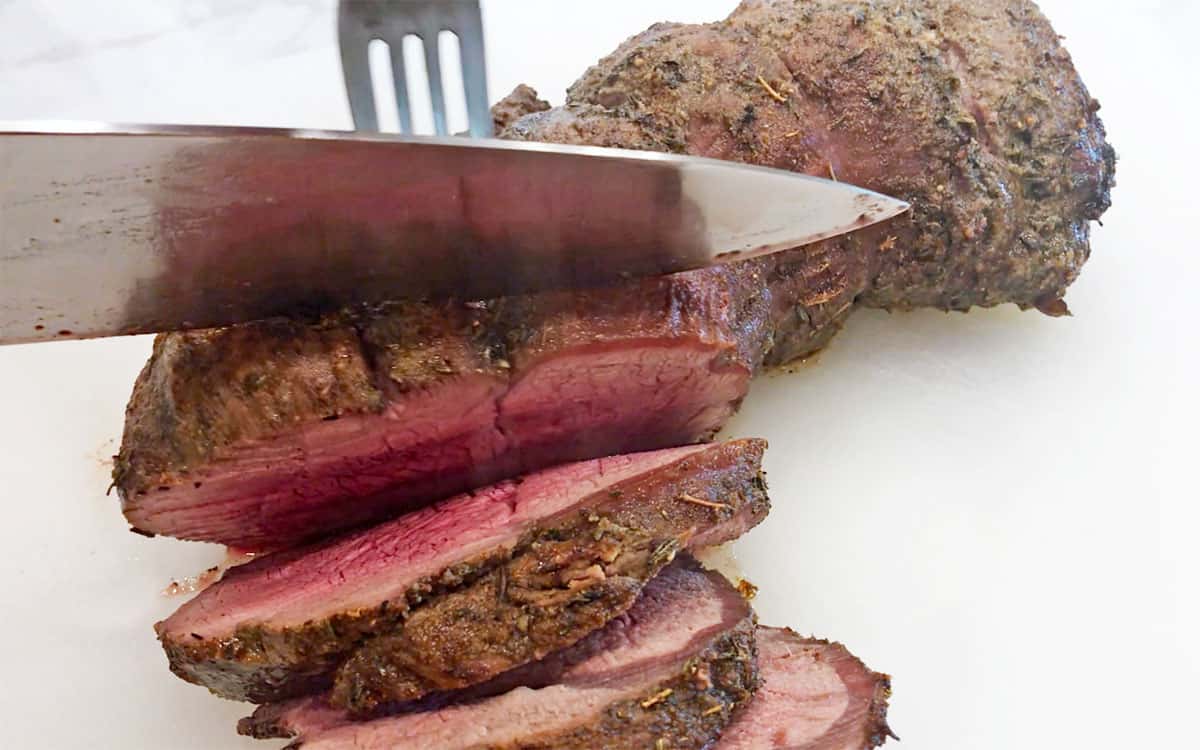
Optional Brown Butter Sauce
This roast is delicious on its own and doesn't need a sauce. However, this easy brown butter sauce makes it extra indulgent:
Melt 4 tablespoons of salted butter in a small saucepan over medium heat. Keep cooking until it slightly browns, then remove it from the heat. After slicing the roast, drizzle the brown butter over the beef slices.

Recipe FAQs
There's no need to pan-sear it. The 15 minutes it spends in a superhot 500°F oven allow it to nicely brown, saving us the extra step of pan-searing.
You should cook it uncovered. You want it to get browned, which is achieved by leaving it uncovered. However, if your roast is larger than 2 pounds and you need to cook it for longer than 30 minutes, you might need to loosely cover its top with foil to prevent it from burning.
You should use an oven-safe meat thermometer that you set to alert you when the meat reaches your desired temperature. You don't want to overcook an expensive roast, and you also don't want the middle to remain raw. Ideally, you want the inside to be medium-rare, 130°F. (However, the USDA recommends cooking roasts to an internal temperature of 145°F.)
The rest time allows the temperature to stabilize and the juices to redistribute and settle. Cut into the roast too early, and you will lose some of those yummy juices, leaving you with drier meat.
You can keep the leftovers in an airtight container in the fridge for 3-4 days. You can also freeze the completely cooled leftovers in freezer bags. Thaw them overnight in the fridge.
I prefer not to reheat the leftovers because I don't want to dry out the meat. One of my favorite lunches is slices of cold roast served with grainy mustard, fresh-cut vegetables, and pickles like these pickled red onions or quick pickles. However, if you'd like to reheat them, do so gently in the microwave at 50% power.
Serving Suggestions
Since the roast occupies the oven and roasted vegetable recipes require a hotter oven than 350°F, I typically serve this roast with a side dish I can cook on the stovetop or in the microwave. Here are a few ideas:
Recipe Card
Beef Tenderloin Roast Recipe
Video
Ingredients
- 2 pounds beef tenderloin roast
- 3 tablespoons olive oil
- 2 teaspoons Diamond Crystal kosher salt - or 1 teaspoon of any other salt, including Morton kosher salt
- ½ teaspoon black pepper
- 1 teaspoon garlic powder
- 1 teaspoon dried thyme
- 1 teaspoon dried sage
Instructions
- Remove the roast from the fridge an hour before you plan to start cooking it. Preheat the oven to 500°F. Line a rimmed baking sheet with foil (for easy cleanup) and fit it with a wire rack.
- Pat the beef dry with paper towels. If one end is thinner, tuck it underneath and tie it with a butcher's twine to ensure the roast cooks evenly. You can also ask your butcher to tie it for you.
- Mix the olive oil and spices, then use your clean hands to rub the beef all over with the mixture.
- Place the roast on the wire rack. Set an oven-safe meat thermometer to 130°F (medium rare) and insert its probe into the thickest part. Place the roast in the oven and cook it for 15 minutes.
- Lower the oven temperature to 350°F. Continue roasting until the thermometer beeps to alert you that the meat is ready, 20-30 more minutes. Transfer the roast to a cutting board. Loosely cover it with foil and allow it to rest for 30 minutes.
- Gently remove the butcher twine (you can cut it with kitchen scissors and then gently pull it out of the meat), slice, and serve.
Notes
- The USDA recommends cooking roasts to an internal temperature of 145°F with a three-minute rest time.
- If your roast is larger than 2 pounds and you need to cook it for longer than 30 minutes, loosely cover its top with foil to prevent it from burning.
- Optional brown butter sauce: Melt 4 tablespoons of salted butter in a small saucepan over medium heat. Keep cooking until it slightly browns, then remove it from the heat. After slicing the roast, drizzle the brown butter over the beef slices.
- You can keep the leftovers in an airtight container in the fridge for 3-4 days. You can also freeze the completely cooled leftovers in freezer bags. Thaw them overnight in the fridge.
- I prefer not to reheat the leftovers because I don't want to dry out the meat. One of my favorite lunches is slices of cold roast served with grainy mustard, fresh-cut vegetables, and pickles. However, if you'd like to reheat them, do so gently in the microwave at 50% power.
Nutrition per Serving
Save this Recipe!
We will also add you to our weekly newsletter. Unsubscribe anytime. See healthyrecipesblogs.com/privacy/ to learn how we use your email.
Disclaimers
Most recipes are low-carb and gluten-free, but some are not. Recommended and linked products are not guaranteed to be gluten-free. Nutrition info is approximate. Please verify it independently. The carb count excludes non-nutritive sweeteners. Please read these Terms of Use before using any of my recipes.

